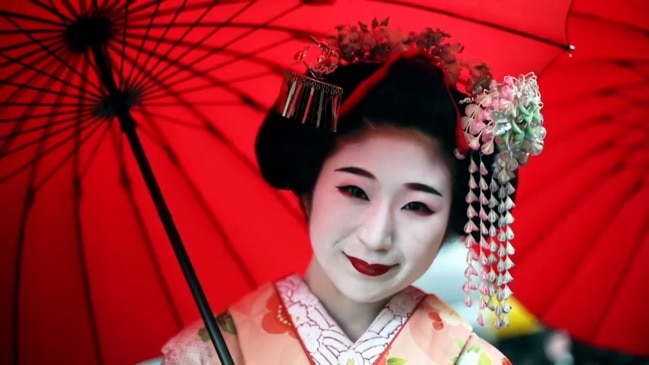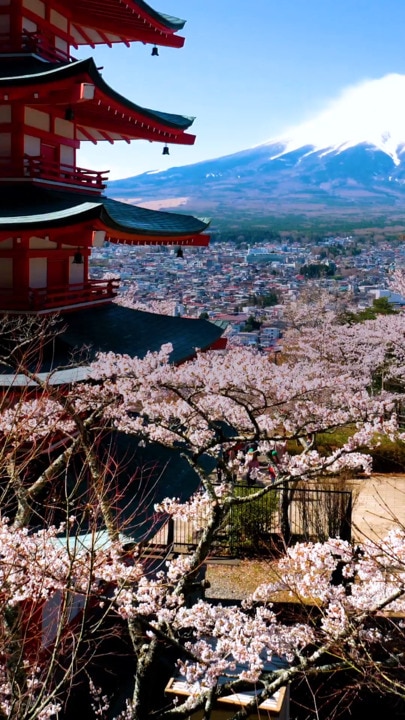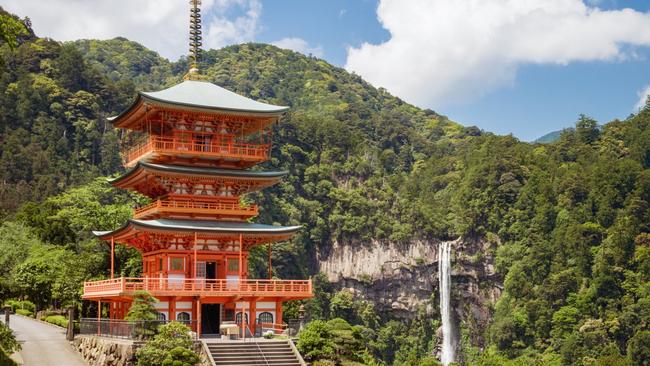I hiked the Kumano Kodo with my 79-year-old mum, it was life changing
Walking one of the world's great pilgrimage routes is always special, but even more so for this traveller who did it with her 79-year-old mum by her side.

Lifestyle
Don't miss out on the headlines from Lifestyle. Followed categories will be added to My News.
Kimi-san walks at the head of the group. A bell hangs from her daypack, tinkling to ward off bears as she strides along, walking poles tapping with each step.
We’re ascending the forest trail to find the next oji (shrine). At a place renowned for forest bathing, we all pause and look up. Sunlight peeks though the leafy canopy, and the dappled effect gives the forest a dreamlike quality. It is one of the many magical moments we share on the Unesco Kumano Kodo walking trail.
My mother and I have joined a Life’s An Adventure tour on a pilgrimage visiting the three important shrines of Hayatama, HongÅ« and Nachi. We’re walking in the footsteps of Japanese religious travellers who have been following these rugged paths for 1000 years, seeking healing and a chance at salvation.

Determined to meditate on every step, I focus on the journey, not the destination, walking beside my mother under gigantic Japanese cedar trees, embracing the pilgrimage. Mum has hiked the only other World Heritage pilgrimage trail, the 800km Camino de Santiago in Spain, so when we finish she will be what’s known as a “dual pilgrim”. This is one of her bucket-list experiences, and I signed up knowing it was an extraordinary opportunity for us. Mum is 79, and still super-fit, so we had to seize the day.
The Kumano Kodo has many steep sections and knowing when, or whether, to walk them is an art in itself. We are in good hands with Life’s An Adventure. Our local guides, Tim and Kimi, alternate every few days but their level of care does not. They watch us inconspicuously, monitoring our water intake and energy levels.

When Mum tires quickly on a steep incline, Australian guide Danny graciously walks us back to Takahara Lodge where we spend an afternoon drinking coffee and eating ice cream as owner Jian plays flamenco music on his guitar. We contemplate the vista of the Hatenashi Mountains (also known as the Endless Mountains) while the rest of the group tackles a steep route that would certainly have been too demanding for us.
Nature feels more intense here. When it rains, the leaves of the Kumano forests perform a rich dance through the green palette of a paintbox; bright jade, shimmering emerald, vibrant apple, dark moss, deep olive, silvery sage. Tinged with red, yellow and burnt orange hints of autumn, the forest is a vivid spectacle for visitors to the Kii Peninsula on Japan’s main island Honshu.
Humidity is high and the summer heat hasn’t yet left the mountains. Sweat rolls from underneath my hat down into my eyes. Mum announces that she is sweating from her elbows. Our whole group is soaked from the start of the day to the end.

At lunchtimes on the trail we stop at shrines, under trees, or in tiny villages where the locals serve us green tea when we pull out our bento boxes. Filled with rice, fish, protein, egg rolls, fruit and sweets, we delight in the surprise every day and eat ravenously.
Accommodation on the tour is at Buddhist temples, family-run guesthouses and large hotels, all enchanting settings where we soak in hot springs, eat indulgently and rest. We sleep deeply, on futons or Western-style beds.
For dinner most nights, an exquisite omakase spread awaits, with sashimi, miso soup, soba noodles, tempura and more. Like the Japanese, we eat with chopsticks, and dining becomes a mindful, respectful meditation on the food we are eating and the degree of care and attention that the chef has put into it for us.

While we hike, our group talks and laughs, then quietens, pondering the mountainous wilderness. As we hike we encourage each other, and point out forest mushrooms, moss on logs, tiny shrines, spectacular views and overhanging branches while our guides write (and recite) poetry and tell stories of the people who have walked these paths before us. The 99 Shinto ojis are sites of worship but also rest stops. While we catch our breath, we hear about the woman who sought salvation after entertaining too many lovers (300), the lost children who’ve wandered from their families, the sick wanting relief, the elderly seeking grace.
Of course, on a 52km hike, there are challenging moments for both Mum and me. Going uphill for hundreds of steps at a time is hard on the quads, and going down steep inclines is similarly hard on the knees, but Mum doesn’t complain. Up every hill, down every cobbled path strewn with twisted tree roots, she tramps onwards.

I’ve fallen in love with hiking again and adapted to the rhythm; up, down, eat, drink, breathe, absorb, observe. We have entered the torii gates of the three grand shrines and feel purified, rejuvenated, reborn. Mum, as a double pilgrim, is doubly righteous. And she’s not ready to hang up her boots just yet.
“I didn’t think I had another mountain left in me, but I climbed three in Japan,” she says happily. In many ways she conquered a bigger emotional mountain. She’d been convinced this would be her last hike, and her last big holiday. Thanks to the Kumano Kodo, there are more in her future.
The writer travelled courtesy of the Japanese Tourist Bureau and Life’s An Adventure.
How to do the Kumano Kodo
Life’s An Adventure’s eight-day pack-free guided Japan Kumano Kodo walk has departures from Osaka every April until October, from $7099 per person.
How to get to Osaka from Australia
All Nippon Airways (ANA) has daily flights from Sydney or Melbourne to Osaka via Tokyo.
Travel tips for Kumano Kodo travellers
Book a day or two either side of the tour so you have time to explore Osaka. Get a JR pass and catch the Shinkansen bullet train to Kyoto, the “City of a Thousand Temples”.
More Coverage
Originally published as I hiked the Kumano Kodo with my 79-year-old mum, it was life changing




